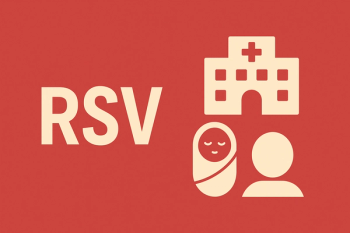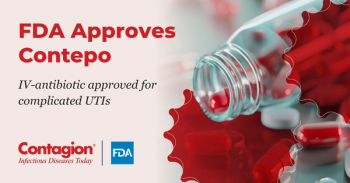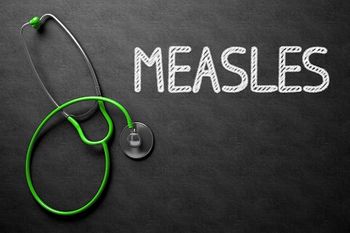
- Contagion, December 2021 (Vol. 06, No. 6)
Candida auris: Coming Soon to a Facility Near You?
Epidemiologic and clinical lessons for the uninitiated.
For clinicians who haven’t dealt with it, Candida auris, the emerging antimicrobial-resistant fungal “superbug” that causes severe illness and outbreaks in health care facilities, may seem like a zebra. However, the situation has evolved over the past 5 years since C auris was first detected in the United States in 2016. No longer restricted to New York and Chicago metropolitan areas, this multidrug-resistant organism (MDRO) is increasingly prevalent in several US regions, including California, Florida, and areas in the mid-Atlantic and Midwest.1
We’re increasingly seeing cases without known sources—that is, no known links to other people with C auris,2 no known history of health care in areas with C auris, and no health care in international settings—making the detective work of tracking this elusive pathogen even more challenging. Like COVID-19, it spreads silently among asymptomatic patients, and so it can be very difficult to tell how it was first introduced to a particular region or community, and how many people have been affected.
How It Spreads
This fungus has an uncanny ability to colonize the skin of medically fragile people3-5 in high-acuity long-term care facilities6-8—think ventilator-capable skilled nursing facilities (vSNFs) and long-term acute care hospitals (LTACHs). And those facilities have been the focus of media and public health attention.
Unfortunately, C auris is not contained by hospital or facility walls and often spreads to and within facilities beyond LTACHs and vSNFs. Patients with chronic health care requirements often cycle between facilities of different acuities and end up in acute care hospitals when they decompensate clinically. In any of these facilities, C auris can spread to other residents or patients when infection control procedures are not rigorously followed. If that resident or patient transfers to a new facility with inadequate infection control, the chain of transmission continues.
Skin colonization might not seem like a big deal since our skin is covered with a microbiome of yeasts and bacteria. However, C auris causes invasive infection (eg, sepsis, pneumonia) in a remarkable 5% to 10% of colonized residents and patients in long-term care, and 30% to 60% of those with invasive infections die within 30 days. Note that patients with these infections often have severe comorbidities, so some of this mortality is not attributable to C auris.3,9,10 Early detection in health care facilities is essential to prevent spread of colonization and serious clinical infections from C auris that may subsequently develop.
In addition to spreading easily between facilities, C auris, like any infectious disease, has no regard for state or jurisdictional borders and has continued to spread to new areas during the past 5 years. Health care facilities in the same geographic area (or even across the country) are highly interconnected, particularly in today’s landscape of frequent travel. At tertiary care hospitals that provide care for patients from multiple states, many patients are admitted from out of state or wish to transfer out of state to be closer to family. Patients are frequently transferred between facilities, taking familiar pathogens like methicillin-resistant Staphylococcus aureus and more unusual pathogens like C auris with them.
On the West Coast, where C auris had not been identified before 2018, the focus at most local health departments had been on C auris screening strategies aimed at patients who received health care abroad. However, it has become clear that C auris has now firmly established its presence in multiple states, suggesting that we should strongly consider broadening our screening criteria to include these domestic, high-prevalence areas. Nowadays, the first introduction of C auris to a US region is more likely to come from a US patient without recent international travel.
Waiting on the first clinical case (eg, sepsis, pneumonia) to start a public health response is often too late. If 5% to 10% of patients colonized with C auris develop an invasive infection, then at least 10 to 20 patients are colonized with C auris before 1 person develops and tests positive for an invasive infection—and that infection may follow months or years after the patient first becomes colonized. In other words, C auris can spread widely across patients and facilities before the fungus finds its way into a person’s bloodstream and can certainly spread widely before it is detected by standard clinical laboratory surveillance measures.
Epidemiologic and Outbreak Investigation Experience
Through a novel partnership between local health departments and LTACHs, which began in 2018, a Southern California LTACH laboratory performed proactive species identification on any urine specimens that contained yeast to enable early identification of C auris. Most yeast in urine (and other noninvasive) specimens normally reflects colonization instead of clinically significant infection, so species identification is not commonly performed by clinical labs. However, because C auris is a multidrug-resistant yeast of concern that can also be found in urine and other non-invasive specimens, species identification becomes a very helpful early-detection method.
Through this method, Southern California’s first C auris case was identified in Orange County 3 months before the first bloodstream infection was identified.11 Three months is, unfortunately, plenty of time for C auris to spread widely if prevention measures aren’t in place. Even with the early-detection process in Orange County, which prompted rapid, widespread colonization testing of patients in long-term care facilities through a partnership between CDC and local health departments, we identified more than 100 colonized people across the county that would otherwise have remained undetected.11 Had there been a 3-month delay, that number would have been much higher and transmission would have been much more difficult to contain through heightened infection control.
Based on where C auris is commonly found, how it can be detected, and how transmission occurs, pertinent strategies can be implemented. Early-detection strategies for C auris include colonization screening for patients coming from high-risk long-term care facilities or areas known to have high C auris burden, point prevalence surveys (defined as colonization testing for all residents/patients) at high-risk long-term care facilities, and routine—or at least, more frequent—species identification of Candida from all clinical specimens (eg, urine, sputum, wound, in addition to invasive specimens).
The action doesn’t stop there. Providing robust infection control across facilities makes a tremendous difference in slowing spread of C auris and other MDROs, specifically hand hygiene techniques, use of gowns and gloves when caring for patients with C auris and other patients with MDROs to prevent transmission, and rigorous environmental cleaning.11 Regular monitoring of these practices is important to ensure compliance.
The experience in Southern California had a few elements that were key to our success. For starters, it was a combined approach, with collaboration between CDC, state, and local health departments. The team built on existing infrastructure and relationships between local health departments and area vSNFs and LTACHs. And we acted early before C auris had become a significant problem in the region.
Rather than just requesting that facilities screen for C auris, CDC and health departments worked to make the process collaborative and demonstrate value for the facilities, including providing education about C auris, expert feedback from trained infection preventionists, and long-term infection control support. This strengthened relationships and helped facility staff feel invested in case finding and screening for C auris. It also fostered intercounty and interfacility cooperation on C auris containment, making it a team effort. The team kept neighboring health departments in Southern California informed, recognizing that C auris could easily spread to facilities in nearby counties and trying to reduce the risk that stray embers would ignite transmission in those areas.
Finally, we worked closely with key laboratory partners from start to finish, including the Antibiotic Resistance Laboratory Network12 and the CDC laboratory to ensure we had resources to test screening specimens rapidly to allow for result-driven intervention.
The multidisciplinary nature of our intervention, offering education and support that facility staff valued, and interagency cooperation enabled quick and effective C auris detection and response in Southern California.
For regions seeking to join the mission to prevent C auris transmission, we’d recommend a similar proactive approach: promoting early awareness about C auris, building relationships with local facilities, providing education and infection-control resources, and collaborating with neighboring regions to share strategies, lessons learned, and successes to strengthen detection and infection control in the region.
Clinical Takeaways
Our central message is that it’s important to identify the introduction of C auris into a health care network as early as possible so that a public health response can be initiated to mitigate spread. Here is what facilities can do:
- Be vigilant and proactive in identifying C auris colonization in residents and patients.
- Ensure robust infection control at all times, not just after the first C auris case is identified.
- Enhance communication between facilities and health departments about patients’ MDROs status.
- Provide high-quality, evidence-based care to all patients, regardless of MDRO status.
Given the substantial prevalence of MDROs in our health care networks, all facilities should commit to learning how to best care for patients colonized with MDROs. Most importantly, facilities would benefit from working together and not in a silo. Infection control across a health care network depends on the strength of infection control at each facility. A single case can easily multiply in a facility with poor infection control and then spread to other facilities. In addition, a facility with ongoing transmission can continue to seed the entire network if good detection methods and infection control are not present across all sites.
Local health departments play a critical role in raising awareness and providing education, support, and vigilance on emerging pathogens like C auris because their arrival may be just around the corner in this increasingly interconnected world. The most painful lesson in our experience was how quickly progress can stall if infection control falters or vigilance for C auris is lessened. The challenges during the COVID-19 pandemic, including widespread personal protective equipment and staffing constraints, prompted resurgence of C auris in Southern California despite prior successful containment, as well as spread in other areas of the United States.11 This resurgence of C auris underscored the need for ongoing support and consistent attention to rigorous infection control and early-detection strategies for pathogens of concern.
Although containment of C auris can be difficult to achieve, it is possible. With the right team, robust outreach, dedicated resources, good adherence to infection control measures, and coordinated collaboration, further transmission can be halted. Even better, investments in C auris detection infrastructure and control strategies in the present will help us in the future—not only for C auris, but also in preventing transmission of the next zebra pathogens on the horizon.
Ellora Karmarkar, MD, MSc, is currently an infectious diseases (ID) fellow at the University of Washington and trained in internal medicine and pediatrics at the University of Chicago. She previously served as an epidemic intelligence service officer with the Centers for Disease Control and Prevention (2018-2020), and served as a medical officer in local public health for the COVID response until beginning ID fellowship.
Meghan Lyman, MD, is is a medical officer in the Mycotic Diseases Branch, Centers for Disease Control and Prevention. She began her career at CDC focusing on health care-associated infections and infection control, and is now leveraging that experience within the Mycotic Diseases Branch to prevent a wide range of fungal diseases.
Brendan R. Jackson, MD, MPH, leads CDC’s Mycotic Diseases Epidemiology Team, which is devoted to tracking and preventing a wide range of invasive fungal diseases, both established and emerging. He is a commander in the US Public Health Service.
References:
- Tracking Candida auris. CDC.Updated October 27, 2021.Accessed November 16, 2021.
https://www.cdc.gov/fungal/candida-auris/tracking-c-auris.html - Lyman M, Forsberg K, Reuben J, et al. Notes from the field: transmission of pan-resistant and enchinocandin-resistant Candida auris in health care facilities - Texas and the District of Columbia, January-April 2021.MMWR Morb Mortal Wkly Rep. 2021; 70(29):1022-1023. doi:10.15585/mmwr.mm7029a2
- Forsberg K, Woodworth K, Walters M, et al. Candida auris: the recent emergence of a multidrug-resistant fungal pathogen. Med Mycol. 2019;57(1):1-12. doi:10.1093/mmy/myy054
- Uppuluri P. Candida auris biofilm colonization on skin niche conditions. mSphere. 2020;5(1):e00972-19. doi:10.1128/mSphere.00972-19
- Jeffery-Smith A, Taori SK, Schelenz S, et al. Candida auris: a review of the literature. Clin Microbiol Rev. 2017;31(1):e00029-17. doi:10.1128/CMR.00029-17
- Adams EH, Quinn M, Ostrowsky B, et al. The value added from Candida auris point prevalence and environmental studies in New York State. Open Forum Infect Dis. 2018;5(suppl 1):S149. doi:10.1093/ofid/ofy210.396
- Adams E, Quinn M, Tsay S, et al; Candida auris Investigation Workgroup. Candida auris in healthcare facilities, New York, USA, 2013-2017. Emerg Infect Dis. 2018;24(10):1816-1824. doi:10.3201/eid2410.180649
- Kerins JL, Tang AS, Forsberg K, et al. Rapid emergence of Candida auris in the Chicago region. Open Forum Infect Dis. 2018;5(suppl 1):S28. doi:10.1093/ofid/ofy209.064
- Southwick K, Adams EH, Greenko J, et al. New York State 2016-2018: progression from Candida auris colonization to bloodstream infection. Open Forum Infect Dis. 2018; 5(suppl 1):S594-S595. doi:10.1093/ofid/ofy210.1695
- Rossow J, Ostrowsky B, Adams E, et al; New York Candida auris Investigation Workgroup. Factors associated with Candida auris colonization and transmission in skilled nursing facilities with ventilator units, New York, 2016-2018. Clin Infect Dis. 2021;72(11):e753-e760. doi:10.1093/cid/ciaa1462
- Karmarkar EN, O’Donnell K, Prestel C, et al. Rapid assessment and containment of Candida auris transmission in postacute care settings-Orange County, California, 2019. Ann Intern Med. 2021;174:1554-1562. doi:10.7326/M21-2013
- Lab capacity: Antibiotic Resistance Laboratory Network (AR Lab Network). Updated October 20, 2021. Accessed November 16, 2021.
https://www.cdc.gov/drugresistance/solutions-initiative/ar-lab-network.html
Articles in this issue
almost 4 years ago
Identifying Disparities in Sepsis Diagnosis for Unbiased Carealmost 4 years ago
Ready, Set, Cabenuva: Implementing Cabotegravir/Rilpivirinealmost 4 years ago
Respiratory Virus Season: Colds and COVID-19 Updatealmost 4 years ago
Ibrexafungerp: Paving the Way for Novel Candida Pharmacotherapyalmost 4 years ago
COVID-19: Year 2 in ReviewNewsletter
Stay ahead of emerging infectious disease threats with expert insights and breaking research. Subscribe now to get updates delivered straight to your inbox.

































































































































































































































































































